Whether the calendar agrees or not, summer has arrived to much of trout country, and it won’t be long before we start hearing about heat-induced fishing restrictions, or fishing closures altogether. Many eastern locales have experienced a rain-starved spring, leading to below-normal streamflows and reservoir levels, and above-normal stream temperatures. In the West, it’s another lean water year in a series of lean water years. According to the most recent report from NOAA’s National Integrated Drought Information System (NISDIS), widespread warm and dry conditions since spring arrived have led to rapid snowmelt across the western United States. In fact, according to NISDIS, many areas of the West aren’t simply facing poor or below-average snowpack compared to normal levels, but already have no or almost no snowpack at all.
This means that a slim supply of snow remains to melt off and to deliver to rivers and streams life-giving cold water for trout. As temperatures continue to warm up and conspire with low water, some of the best trout rivers in the country will become less hospitable to the trout that swim their waters.

Lower and warmer water is nothing new, particularly if you’ve been following the trends brought on by a changing climate. But it is more prevalent when water is more scarce. And for anglers, that means fewer opportunities and an increased likelihood that trout that do survive the catch-and-release encounter will incur injury or even death.
It’s exactly what scientists and biologists have been warning of for the last several decades. More recent reports from scientists predict that trout could lose up to 50 percent of their habitat this century, and undoubtedly, year-round trout habitat is already on the decline.
So what can you do about it?
Aside from engaging politically on climate change issues — which you no doubt should do, even if it feels as though you’re banging your head against a brick wall — there are a number of things you can do to protect trout and ensure they’ll be there when the water cools off a bit. Here’s a quick primer:
Watch the thermometer
Know the water temperature and stop fishing when the water gets a bit too warm for the comfort of the average trout. When’s that? Well, for most trout, water that approaches 70 degrees can be fatal. Temperatures in the mid- to upper 60s are tolerable to most trout if they’re left alone to deal with the stress of the temperature. In other words, when water temperatures climb into the mid-60s (anything 67 or higher is a good rule of thumb), you should climb out of the water and do something else. Keep a thermometer in your vest or pack and use it at hourly intervals. You’ll be surprised at how quickly the water warms on a hot day.
Go higher
Your local valley stream may reach treacherous stream temperatures by mid-day, but higher-elevation streams might be habitable and fishable all day long, if you’re willing to sacrifice size for opportunity. It might seem like too much of a compromise to switch out the chance to cast to 20-inch rainbows for dapping for 10-inch brook trout, but if you love to fish, there’s opportunity to do so if you’re willing to change your expectations. And, you’ll be able to see what all the fuss is about when the local creek freak talks about the merits of the new glass 2-weight on the market.
Handle with care
Even when water temperatures aren’t stressing trout out, be careful when you’re handling trout you’re lucky enough to catch. Keep them in the water whenever possible. If you must have the hero shot, make it quick, and make sure the fish stays wet and is only out of the water for as little time as necessary--shoot for five seconds or less. Also, to avoid becoming the target of every “Karen’s” ire, make sure the fish is noticeably wet when you shoot the photo (and then post it on social media). Not even the most nit-picky purist can jump you if you can show water dripping off of the trout you post on Instagram. Why is this important? Imagine being hooked in the mouth and dragged around the river for several minutes, literally fighting for your life, only to be deprived of oxygen for a minute at a time while somebody makes sure the light’s just right or the angle is ideal. Then, you’ll be unceremoniously dropped back into your element, exhausted and terrified. It may take the average trout only a couple of hours to get over the experience, but what if, during that time, the water warms to a temperature that’s untenable? Stress atop of stress. Never a good thing.
Explore new species
Why be trout-limited? Other fish are still within their comfort zones during hot weather. Across the country, panfish and largemouth bass are excellent alternatives to fishing for trout during the heat of summer. But anglers have lots of other options to choose from, even if they don’t know it. In both the East and the West, most states known for offering good trout fishing also offer good-to-excellent smallmouth fishing. In the East, fall fish can be reasonable alternatives to trout, and they can tolerate warmer waters better. Out west, pikeminnows and chubs are still likely to hit a fly. The local carp pond can be a ton of fun for an angler willing to “slum” a bit, and it can be challenging to learn about a new quarry. Carp aren’t pushovers.
Take a few weeks off
No, it’s not ideal, but if you’re a dedicated trout angler, this is where we are these days. Throughout the country, climate change is having a very real impact on our lives and on our rivers. When it’s hot outside and when water temperatures are dangerously high, don’t fish for trout. Do something else.
Climate change is happening, and our trout waters are suffering because of it. It’s the greatest existential threat to humankind. Ever. So, in addition to writing that letter to your representatives in Congress, you might be forced to act on the issue, even if you don’t know you’re doing it. By leaving trout rivers and the trout themselves alone when the heat and the drought work in concert against them, you’re taking a very small step in the right direction.
By fishing higher-elevation streams and seeking out smaller trout in healthier habitat, you’re helping to make it possible for trophy trout hanging on during the heat of the summer to be there when you swing that big streamer through that perfect run later this fall.
Warming temperatures and drought needn’t be the end of trout fishing, but until we can muster the political will to do what’s necessary to slow the pace of global climate change, we’re going to have to make the sacrifices that come with inaction. Do your part and find cooler water, happier trout or different fish altogether.
And keep writing those letters.




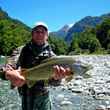











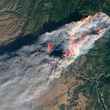



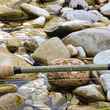
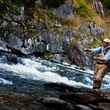



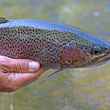
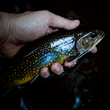


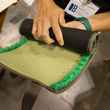
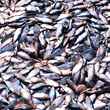
Comments
t tanner replied on Permalink
Thanks, Ben. Great piece and excellent advice!
Pages